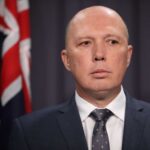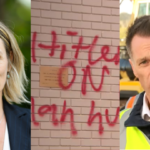A Pioneer of Harm Reduction: An Interview with Dr Ingrid van Beek

There’s been a push from harm reduction experts to implement a system of pill testing at music festivals and nightclub precincts for years now. This evidence-based approach allows drug users to understand what they’re consuming and has been carried out in European countries for decades.
A recent spate of drug-related deaths in Melbourne and on the Gold Coast has led to increased public support for such an initiative. However, politicians at the state level have been reluctant to consider the issue, especially the current NSW government.
It’s always been a battle
This reluctance has led to criticism that Australia has fallen behind other countries in the field of harm reduction. But it’s important to remember that in many ways this nation has been a pioneer in establishing programs that have reduced the harms associated with drug use.
And most of these earlier initiatives – that are still having an impact today – faced fierce opposition when they were established, so maybe there is a chance that pill testing is just around the corner.
Targeted primary healthcare
Take the Kirketon Road Centre in Sydney’s Kings Cross. Established in 1987, the centre provides primary healthcare services for “at risk” youth, sex workers and people who inject drugs. And it’s been described as a world leader in its targeted approach.
Amongst other services, Kirketon Road runs a take-home program for naloxone – the drug that reverses opioid overdoses. It also provides hepatitis C testing and monitoring, as well as running a nightly outreach bus service that gives out safe sex and injecting equipment to people on the street.
The sharp end of harm reduction
Since 1989, Dr Ingrid van Beek has been the director of the centre. A public health and addiction medicine physician, the doctor has been a leading force in Australian harm reduction for decades now.
Dr van Beek was also a key player in making Sydney’s Uniting Medically Supervised Injecting Centre (MSIC) a reality. The facility was an outcome of the 1999 NSW drug summit, where Dr van Beek addressed the delegates stressing the need for better access to drug treatments and rehabilitation.
An overwhelming success
From 2000 until 2008, Dr van Beek was the founding medical director of the MSIC. Although, the centre had the support of 78 percent of residents and 70 percent of local businesses, the doctor still had to fight both publicly and legally to see it opened.
Established in 2001, the MSIC has had a dramatic effect on the local Kings Cross area, which was going through a heroin crisis in the 1990s. After it’s first 10 years of operation, ambulance call-outs were down by 80 percent, and public injecting and discarded syringes had halved.
Dr van Beek has been happily married to former Western Australian premier Geoff Gallop since 2010. In 2004, she published In the Eye of the Needle, an account of the first months of the MSIC. And in the coming days, she’s about to retire from her position of director at Kirketon Road.
Sydney Criminal Lawyers® spoke with Dr Ingrid van Beek about what it’s like to have been at the cutting edge of Australia’s harm reduction field for close to 30 years.
Firstly, the Kirketon Road Centre has been described as a world leader in providing primary healthcare for “at risk” youth, sex workers and people who inject drugs.
Can you tell us a bit about what sort of services the centre actually provides?
A really broad range of services. Right from general medical, so you can come here with a cough or a cold, or to sort out a rash. Through to specialist medical care for HIV or hepatitis C.
We also provide a broad range of drug assessment services, as well as providing an on-site pharmacotherapy access program. So we dispense daily methadone and buprenorphine from the site as well.
We’ve got counsellors, doctors, nurses, outreach services and a needle syringe program. And we operate from several locations.
The centre is accessed by some of the most socially marginalised members of society.
Why is it important to have a focused centre for these people? Why not just have them access regular medical facilities?
First of all, we’ve got a lot of evidence that people who are in socially marginalised situations don’t tend to access healthcare very well, and often do so only in crisis, when things have reached a critical stage.
Meanwhile, we know the populations that we focus on have significant complex health issues. And not only that, but they’re at risk of acquiring infections, such as HIV, hepatitis C and other transmissible infections. That not only affects their health, but can be transmitted onto the rest of the community.
So we have both an emphasis on trying to address those complex health issues in those individuals for their own health and well-being, but also, for the broader community’s health and well-being.
It’s important for us to target those people most at risk who are likely, as I say, to pass on infections to other people.
The centre was a recommendation of the 1986 Parliamentary Select Committee on Prostitution in NSW.
How would you say, in its time of operation, the centre has improved the lives and health of local sex workers?
At that early stage, quite surprisingly, when you think about what a significant population of sex workers were based in Kings Cross and who were also often drug dependent and injecting, there really weren’t any services back then in the 80s that specifically targeted that population.
So we kind of came into a situation where there was nothing.
By providing this broad-based service for people like this enabled them to learn about their health and reduce their risk and develop a sort of relationship over time with practitioners, who are specially trained to develop a rapport and bring people around to realising there might be alternative lifestyles as well.
While we deal with the immediate health issue, we also try to direct people into training and education. We try to sort out people’s social security and try to encourage them to find work.
And so, we’ve certainly got evidence that we’ve managed to turn around a lot of people’s lives by developing that sort of therapeutic rapport.
So engaging your services can work as a gateway to engaging other differing services?
Yeah, so we deal with the immediate risk by providing needles and condoms and things like that, but also, what’s significant about this model is that we address the underlying issues that people have more generally. And try to actually encourage them onto another sort of trajectory.
You were living in Sydney’s Kings Cross in the 1990s at the height of the heroin crisis. The MSIC wasn’t established until the 2000s.
Just how dire was the situation in the Cross during the 90s?
Well it was pretty shocking. The 90s was very much the decade of, first of all, a heroin glut and then we had cocaine flooding the area as well. And all in combination with police corruption, such that everything was pretty out of control and chaotic.
About two people a week were dying of heroin overdoses. We saw this escalation of hepatitis C in this group of people. And it was very much on the streets, so the amenity of the area was very poor.
Certainly, where I lived down on Victoria Street, down the Butler stairs and so on, it was all needles and screams in the middle of the night.
So that’s really changed a lot over that last twenty years, pleased to say.
Sydney’s MSIC was a recommendation of the 1999 NSW drug summit, of which you were intimately involved. But establishing the centre was a struggle.
Can you tell us a bit about what opposition you faced when establishing the facility?
Well most of it focused on the location of the facility. Even though a pretty broad committee had agreed on what the criteria were for what we were looking for in terms of a suitable site.
Ultimately, despite having looked at 50 or so different sites, the one that was chosen was not to the liking, particularly to the Chamber of Commerce and Tourism, even though, I should add, it was the president before that who directed us to that site.
I guess what people forget is, when it comes to establishing these services, it’s not like a blank canvas. You can’t just walk down the street and say, “OK, well that’s the spot.”
You have to obviously be subject to what’s available on the rental market. That immediately limits where you can go, so that you’ve got a fairly small subset of properties that you can consider. And as I say, we consulted broadly with the community and had a committee that agreed on criteria.
This site did meet those criteria best. But that was what ultimately raised the heckles of a couple of rather notable members of the Chamber of Commerce and Tourism at the time.
So they then decided to sue Uniting Care on the basis that it wasn’t a legal entity entitled to hold a licence to operate an injecting centre. That was actually judged at that time by the Supreme Court to have been rather vexatious given that Uniting Care held 200 licences to operate aged care facilities and disability services, and a whole range of other services, using that same legal entity.
And then they also sued the licensing authority for the injecting centre that being the NSW police commissioner and the director-general of health, on the basis that they could not have assessed the licence appropriately because of the mere fact that they gave us a licence.
One of the criteria was demonstrating a sufficient community acceptance of the location, given that they took the view that it was the wrong location, they argued that the licence was therefore inappropriately issued.
Anyway, they lost both of those cases, but that delayed us opening the service for quite a number of months, during which time it became a bit of a sport watching what the next move was going to be.
And it also gave enough time for other groups to start focusing on the place, including at an international level as well.
There was the Vatican that pulled the Sisters of Charity off the job early on in the piece. Then later on, the International Narcotics Control Board got involved, and the prime minister of the time was very vocal. We also had Brian Watters of the Salvation Army speaking out.
But actually at a local level, putting aside a few other notable members of the chamber, which ended up with a membership of about five, I should add, but apart from that, we actually had very strong support at local level.
We undertook polling, which showed that around 70 percent of the community were really supportive of it. And that of course, was used as evidence, to show that not only were they supportive, but they supported that location.
It was in amongst where all these illegal shooting galleries had been operating for years. The idea that we were going to lower the tone, I mean, that would have been a challenge frankly, because the tone was as low as it could possibly be.
So the idea that a legal, professionally-run clinical operation, under very strict licenced conditions, was going to affect that particular part of Kings Cross negatively, I think most people saw that for what it was.
In 2008, you left your position at the MSIC. And in 2010 the centre’s trial status was lifted and it was confirmed as a permanent fixture.
How would you rate the success of the safe injecting room sixteen years on? And why aren’t we seeing more of them established throughout the country?
I think it continues to be very successful. And frankly, it’s at a risk of being a victim of its success, because it has enabled gentrification to occur here in Kings Cross, so that you often don’t see much evidence of drug use in this area anymore. But that is because it’s accommodated in this clinical facility.
And so there continues to be a lot of people there. It’s continuing to manage drug overdoses successfully. There’s not been a fatality on-site. It’s referred thousands of people to drug treatment.
But the reason we’re not seeing more is partly because there really aren’t the sort of open drug scenes that we saw back in the 90s here in Kings Cross, and places like Cabramatta and Redfern.
Those other areas have dealt with those things in different ways, such that it’s not as in your face.
And it really is an initiative that’s appropriate for areas where you’ve got an existing population of street-based, often homeless, drug users, who are most at risk of a range of public health problems, because of the fact that they inject in a public location. And that causes amenity and public nuisance issues.
There’s still a lot of people who are injecting in the privacy of their own suburban homes. You wouldn’t necessarily want to pull those people out of their homes to inject in an injecting centre if they’re not already on the street.
And the overdose rates have also pared back.
Back in the late 90s, the overdose rate was exceeding the national road toll. The heroin was so strong, so available and so cheap. All sorts of people were getting drawn into it.
And quite frankly, politicians kids were starting to die of drug overdoses. There’s nothing like having a tragedy like that happen so close to you to put it front and centre on the agenda.
I think that’s much less so now, partly because there’s an injecting centre, but also because the heroin glut of the 90s did come to an end, some 15 years ago.
Although we’ve got other drugs that are posing challenges, we don’t have anything that’s killing people at that sort of rate.
There’s a lot of focus in the media over the last few years on the need to establish pill testing at music festivals. And for good reason, it’s an evidence-based approach used widely in Europe.
But aside from pill testing, what other harm reduction measures do you believe need to receive more public attention?
Yeah well, public attention, I’ve got to say, I’m not sure that anything benefits from public attention. I wish these things could be discussed quietly among people with the evidence and so on, rather than playing out on the front pages of tabloid newspapers.
I would think that there’s still a role for a heroin prescription program. We got very close to that back in the mid-90s, but then pulled back from it.
Largely, John Howard, himself, was very opposed to that. And we haven’t really ever gone there again. And that continues to be very successful in countries like Germany, the Netherlands, Switzerland and Canada, more recently.
So that brings in another group of people who are often not ready for the other sort of treatment programs that we’ve got available.
But other than that, I don’t see a pressing need in this state. I think maybe Victoria, I’m led to believe, there are pockets of open drug use there that warrant an injecting centre.
Like north Richmond
Yeah Richmond. But I don’t see there’s a pressing need here in Sydney at this moment. But then again, I think these things should be enabled.
At the moment, the injecting centre operates under its own act of parliament, and precludes any other injecting centres being established.
But these sort of environmental things can change pretty quickly. It would be cumbersome to have to go through another process like what had to happen back in 1999, in order to get a second injecting centre up.
I’ve always advocated that these things should be enabled under local government planning laws, rather than at the state level. So that you’re ready to go when and if a need arises and you’ve got a local area that supports such a thing.
I always emphasise that we did have strong community support. We struggled a bit. Also, partly because we were a lonely only. You certainly wouldn’t want to be trying to get such a thing up if you didn’t have broad-based support in your community.
I think that sort of support can take a long time to develop, but it is crucial I think for success.
I’ve spoken to people about the proposed MSIC for north Richmond and it seems to have a lot of council approval, but they can’t seem to get it at the state level
So the state government seems to be baulking very much at that, which is disappointing, because they’ve got a sort of normally left-of-centre government there.
Around here in NSW we probably wouldn’t be that optimistic. But that said, Gladys Berejiklian exercised her right of a free vote to support the injecting centre on every occasion, so at least at that level, we know, we’ve got support for these sorts of initiatives.
But yeah, I guess you don’t get the sense that the political climate is up for much reform right now.
And lastly, after 28 years you’re about to retire from your position as director of the Kirketon Road Centre.
What’s next on the cards for you?
Well I’m not exactly sure. I’m going to continue to be working on an important research project here at Kirketon Road Centre, so I won’t be completely off into the sunset.
But I’ll probably be doing some consulting work in the public policy area. I suppose, what I’m most interested in, and I think fairly uniquely qualified in, is managing community issues around the establishment of controversial health services.
So that’s the sort of thing. And I’ll be working with my husband in that regard, because he of course, has got the political sides of those things. He’s also worked himself, prior to entering state politics, in local council politics.
We’re interested in looking at urban issues and how you deal with those things, including things such as injecting rooms and how you would manage the community-media-politics around that.
Dr van Beek it’s been a pleasure to have spoken with someone with such an illustrious career. And best of luck with your future endeavours.
Thank you







